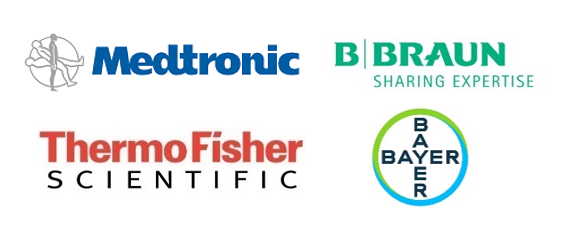Microfluidic Modulation Spectroscopy Market Overview:
As per Reports and Insights Analysis, the microfluidic modulation spectroscopy market is expected to grow at a CAGR of 8.2% during the forecast period of 2022 to 2030.
Protein secondary structure is characterized using the infrared spectroscopy method known as microfluidic modulation spectroscopy (MMS). This use is well recognized for infrared (IR) spectroscopy. Microfluidic modulation spectroscopy, on the other hand, has overcome significant constraints in conventional platforms like FTIR, such as a lack of automation, reproducibility, and dynamic range of detection.
A new method of spectroscopy for analyzing the secondary structure of the protein is microfluidic modulation spectroscopy. The product AQS3 was introduced by the business RedShift BioAnalytics and uses the patented method of microfluidic modulation spectroscopy. The secondary structure of proteins can be measured using this method, which makes use of modern signal processing and mid-infrared laser spectroscopy in a microfluidics environment.
Due to the patented nature of the technology, the market in question is very consolidated. However, because to its use in medical science, microfluidic modulation spectroscopy is anticipated to have rapid expansion in the spectroscopy market over the forecast period.
This market study on the microfluidic modulation spectroscopy market aims to cover market dynamics such as market drivers, challenges/restraints, and opportunities for the market players. It will also cover market segmentation outlook, microfluidic modulation spectroscopy market trend, regional outlook, microfluidic modulation spectroscopy market size, and market share, as well as industry and product insights, SWOT analysis, Porter's five force analysis, PESTEL analysis, heat map analysis, market forecast, and the major players operating in the microfluidic modulation spectroscopy market.
Scope of the Report:
|
Report Metric |
Report Details |
|
Market size available for the years |
2022-2030 |
|
Base year |
2021 |
|
Forecast Period |
2022-2030 |
|
Segments Covered |
By Applications, By End User, and By Region |
|
Regions Covered |
North America
Latin America
Asia Pacific
Europe
Africa
The Middle East
|
|
Key Players |
RedShift BioAnalytics, Inc. |
Microfluidic Modulation Spectroscopy Market Drivers: Advancement in Research and Development
The market is being driven by research and developments related to microfluidic modulation spectroscopy as well as ongoing technical advancements. Over the projected period, greater usage is anticipated to be seen in pharmaceutical quality control and drug designing procedures. Furthermore, microfluidic modulation spectroscopy has applications in a variety of industries, including biotechnology, immunology, and industrial production. As a result, it is hoped that end customers will be persuaded to purchase this unique technology.
Microfluidic Modulation Spectroscopy Market Restraints: Lack of Awareness
Microfluidic modulation spectroscopy is rapidly gaining market share, however there may be obstacles in the way, including a lack of consumer awareness of the product. Due to a lack of information about the product and a lack of distributors, the device has yet to gain traction in developing nations with minimal resource bases.
Microfluidic Modulation Spectroscopy Market Opportunities: Applications in medical & life sciences sector
The secondary structure of proteins can be measured using this method, which makes use of modern signal processing and mid-infrared laser spectroscopy in a microfluidics environment. The protein is measured and quantified along with its stability, similarity, structure, and aggregate formation using this type of cutting-edge spectroscopy. This method is sensitive and precise and can be used to a wide range of circumstances. When a protein's shape changes, its function changes, and this could have an impact on how well proteins like antibodies and enzymes are manufactured.
By using microfluidic modulation spectroscopy, such structural changes can be precisely and sensitively identified. Finding stable and appropriate antibodies is also made easier by this. The expansion of our understanding of biological systems at the molecular level as a result of recent developments and the introduction of ground-breaking products in the medical and life sciences creates greater prospects for microfluidic modulation spectroscopy. As a result, during the forecast year, the manufacturing company can expect a steady incremental opportunity.
Microfluidic Modulation Spectroscopy Market Trend:
The first microfluidic modulation spectroscopy was introduced by RedShift BioAnalytics, Inc. in April 2018. Since then, the company has worked to increase consumer awareness of the product by holding conferences, posting detailed product information online, setting up product trials, and describing the device's numerous and accurate functions as well as its advantages over other spectrometers. To broaden its reach and meet end-user expectations, the company is concentrating on building up its sales team. For instance, in May 2018 the business added crucial hires to its sales team.
A tunable mid-infrared quantum cascade laser is utilised in microfluidic modulation spectroscopy to produce an optical beam that is 1000 times brighter than those used in traditional FTIR.
This makes it possible to test samples that are far more concentrated than with other methods and to employ less complex detectors without the need for nitrogen cooling. The laser is operated in continuous wave mode to produce a beam with extremely high resolution, low noise, and little stray light. This beam is focused through a microfluidic transmission cell with a short optical path length (25 m) onto a mercury cadmium tellurium (MCT) detector that is thermoelectrically cooled.
Microfluidic Modulation Spectroscopy Market Segmentation
The market for microfluidic modulation spectroscopy is divided into segments based on application, end user, and region.
Microfluidic Modulation Spectroscopy Market, by Application:
-
Drug Designing
- Protein quantification
- Quality Assurance & Control
- Others
Microfluidic Modulation Spectroscopy Market, by End User:
-
Academic Research Institutes
- Biopharmaceutical Companies
- Chemical Industries
- Contract Research Organizations
- Research laboratories
- Others
Microfluidic Modulation Spectroscopy Market, by Region:
The market for microfluidic modulation spectroscopy is divided into six major geographical regions based on their economic importance: North America, Latin America, Europe, Asia Pacific, Middle East & Africa.
Due to product availability and high demand from academic institutions and biopharmaceutical businesses, the North American microfluidic modulation spectroscopy market has the greatest revenue share. The microfluidic modulation spectroscopy market in Europe and Asia Pacific, except Japan, is also open for the company to generate sales and revenue, and it is predicted to grow quickly throughout the forecast period. Due to the restricted healthcare spending and poor per capita income, the Middle East and Africa microfluidic modulation spectroscopy is predicted to expand slowly.

